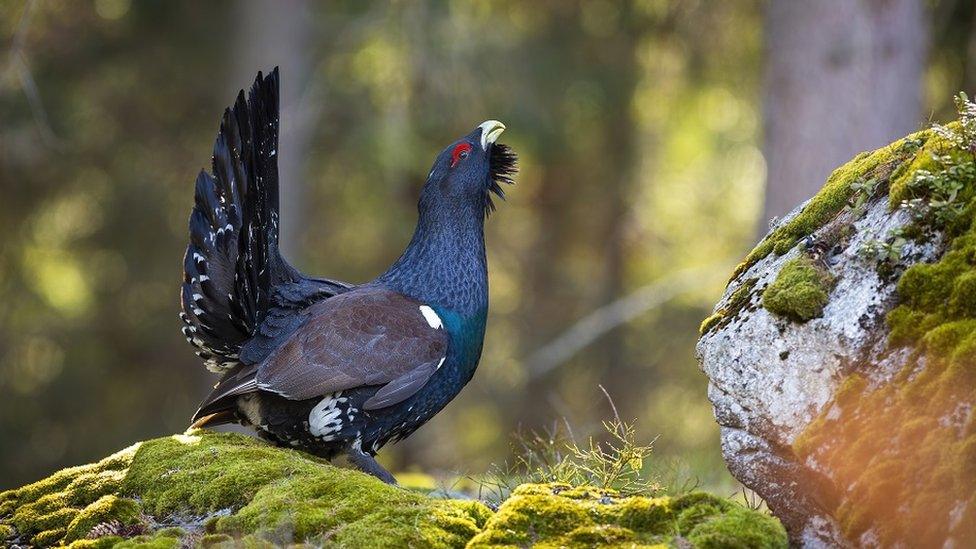Using fake nests to save rare bird from dying out
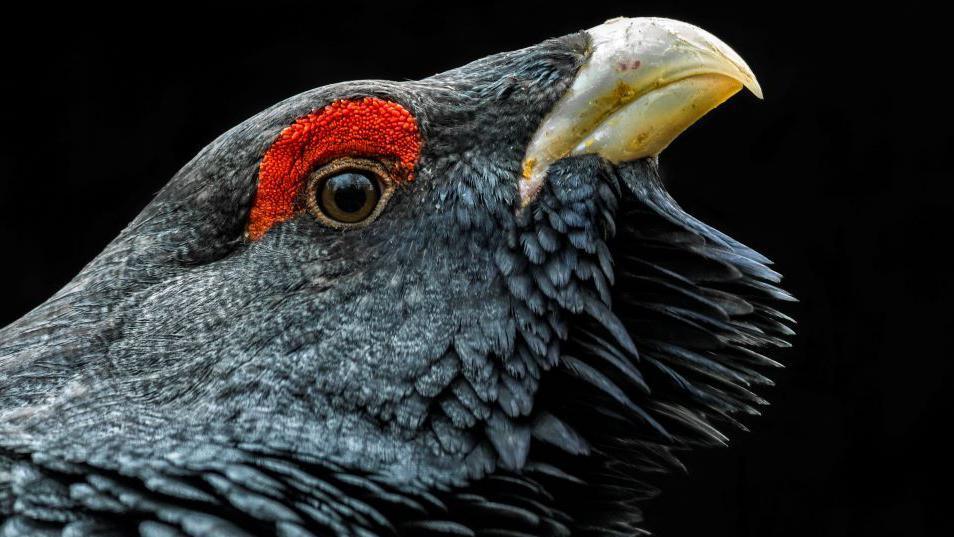
Numbers of capercaillie have been in decline since the 1970s
- Published
Researchers made fake nests and filled them with chicken eggs as part of a trial designed to help save one of the UK's rarest birds.
There are believed to be about 500 capercaillie left in the UK, all of them in a few upland areas of Scotland.
They are a ground-nesting species and pine martens and badgers are among animals that eat their eggs and chicks.
A University of Aberdeen team placed deer meat near the artificial nests to see if the predators could be lured away from eating the eggs. The false nests had an 83% survival rate.
The research carried out in the Cairngorms has been published in British Ecological Society’s Journal of Applied Ecology, external.
The University of Aberdeen's School of Biological Sciences said the study suggested diversionary feeding could be a significant contributor to saving capercaillie from extinction.
As a result of the research, it is being rolled out by Forestry and Land Scotland, RSPB Scotland and other organisations in Deeside in Aberdeenshire.
The eight-week trial during the latest breeding season was carried out in a 23 sq mile (60 sq km) area of land managed by Cairngorms Connect Partnership.
Capercaillie in Scotland
720Artificial nests filled with chicken eggs were set up in historic capercaillie habitat
360Of the nests also had feeding stations with deer meat
500Estimated number of capercaillie in Scotland, with most found in Cairngorms
![In numbers:. Capercaillie in Scotland [ 720 Artificial nests filled with chicken eggs were set up in historic capercaillie habitat ] [ 360 Of the nests also had feeding stations with deer meat ],[ 500 Estimated number of capercaillie in Scotland, with most found in Cairngorms ], Source: Source: University of Aberdeen, Image:](https://ichef.bbci.co.uk/news/920/idt2/idt2/b520c261-d83c-4ff3-8f2c-b1345d8f2198/image/460)
Capercaillie and pine marten are both protected species.
PhD researcher Jack Bamber said: “A major obstacle in effective conservation management is the conflict between recovering predators eating endangered prey.
"This challenge is becoming commonplace in the era of ecosystem restoration.
"In Scotland, the much-celebrated recovery of the pine marten, a nest predator, and the conservation of one of its potential prey, the capercaillie, epitomises this issue."
Mr Bamber said diversionary feeding was a potential solution to this conflict.
He added: “Our idea was to fill the bellies of pine martens and other predators, like badgers, in capercaillie strongholds, predicting that once full of free food they would no longer search for eggs.”
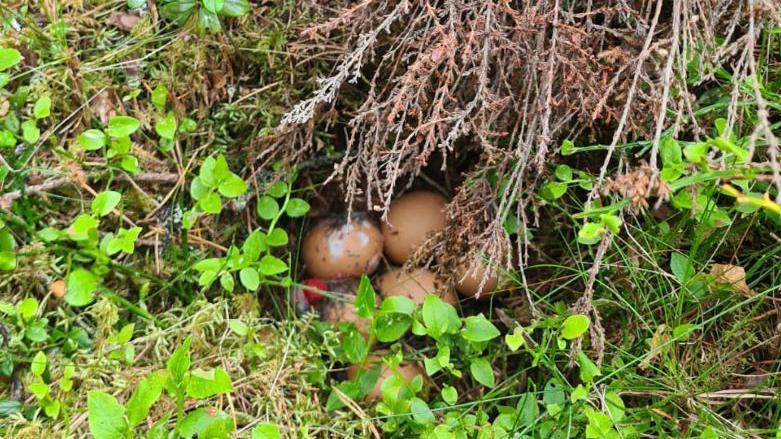
A fake nest with chicken eggs in undergrowth in Cairngorms
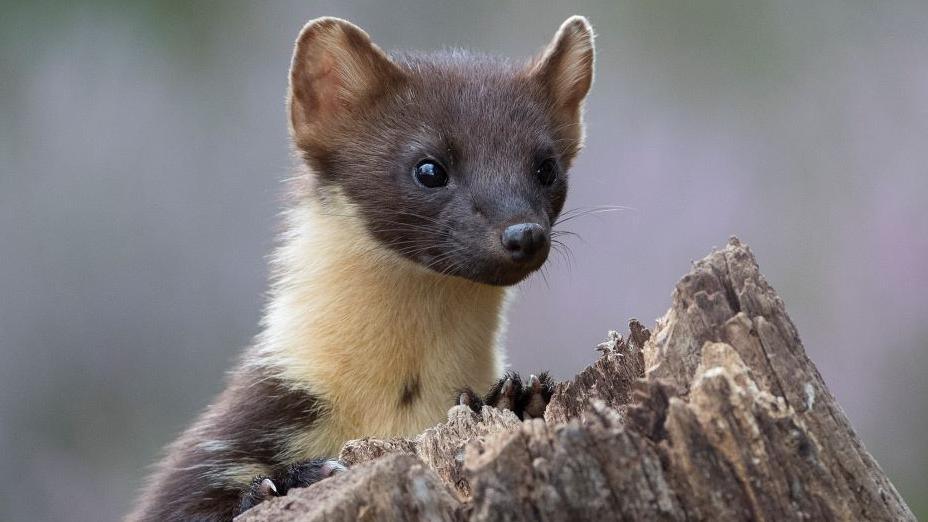
Pine marten are a protected species
In 2022, scientists warned capercaillie could be wiped out in Scotland within the next 30 years.
Numbers of the large grouse have declined markedly since the 1970s.
In continental Europe, the birds' conservation status is not rated as a concern but they are considered to be an endangered species in Scotland.
Most capercaillie are found in the Cairngorms National Park.
Related topics
- Published25 February 2022
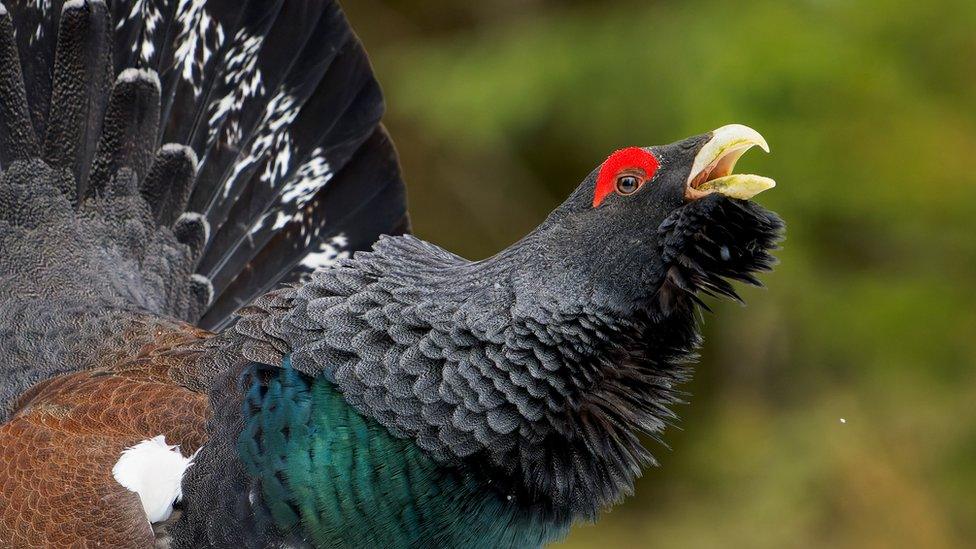
- Published22 January 2022
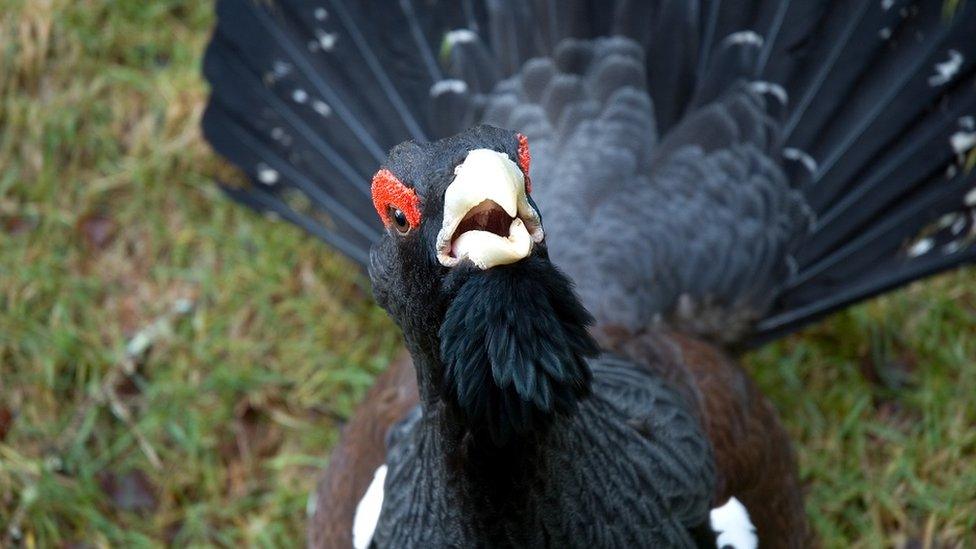
- Published24 June 2021
